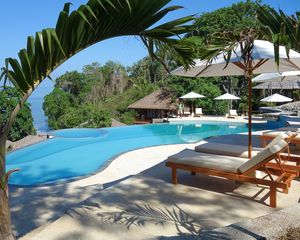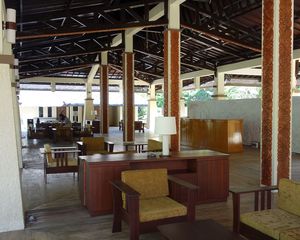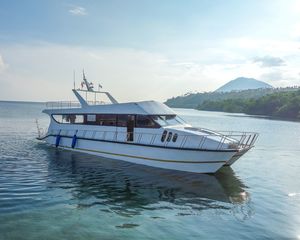Bunaken Oasis Dive Resort & Spa
Bunaken Island - North Sulawesi - Indonesia
The Bunaken Oasis Resort is our latest offering in Indonesia and is luxury at its best.
Bunaken Oasis redefines diving in Bunaken. Positioned very much at the luxury end of the spectrum, the aim is to provide a 5-star experience whilst keeping the ecological footprint to a minimum.
The resort offers 12 large, traditionally-built villas, including one family villa with two bedrooms, and one villa near the Long House for those who may have difficulty walking.
A major focal point of the resort is a free form infinity pool, with sun-loungers and easy access to the bar, for those who want to spend time above, rather than below, the water.
In addition to a chill-out cocktail bar and a full-service restaurant serving Indonesian and international cuisine, guest amenities also include an air conditioned library, a fully-equipped classroom in the Dive Centre with 4k flat-screen TV, especially useful for photographic groups, and a spacious camera room with more charging points than you will ever need.
The Bunaken Marine National Park is a protected, though fragile, environment, and we are committed to taking our eco-responsibilities very seriously. Using our own bore holes, or even sea-water, with water makers and ultraviolet treatment, we have ensured that all the water in the resort is fully drinkable, and we can avoid the need for one of the greatest pollutants of our time - plastic bottles. In addition, all waste water will be processed through a water-treatment plant. Contact us for pricing and availability...!



Diving is from one of our brand-new, purpose-built dive boats (1 x 17 metre fibreglass catamaran, 3 x 14 metre and 2 x 16 metre traditional wooden boats ). All of the boats provide freshwater deck showers, catering facilities, flushing WCs, and excellent facilities for photographers. However, the resort is most proud of is the space you’ll enjoy on board.
And technical diving is available...!
Oasis Explorers is a newly-launched technical training facility located at Bunaken Oasis Dive Resort and Spa in North Sulawesi, Indonesia. The facility is the first in Bunaken Marine Park to offer multi-agency technical training, trimix and CCR compatibility, and a vastness of unexplored deep dive sites, all in the setting of an award-winning luxury dive resort. Expect a state-of-the-art filling station, specialised equipment, experienced surface support and expert advisors.